Overall, the Sansevieria Cylindrica is a very low-maintenance plant (like with many succulents). They are very easy to grow and care for and are great for beginners!
They have a stunning, unique look to them with leaves that look like a spear (hence their nickname). Follow this ultimate care guide to raise a healthy, happy African Spear in your home.
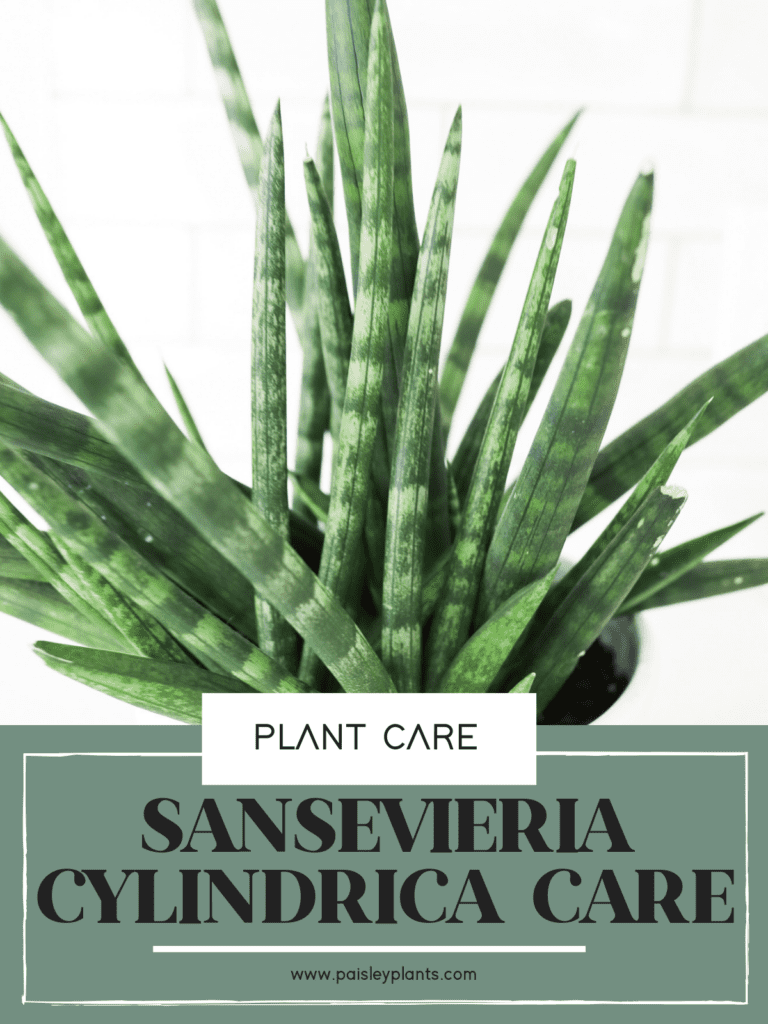
This post includes affiliate links.
Table of Contents
Sansevieria Cylindrica Background
These plants has many common names, including the African spear plant, bowstring hemp, and the cylindrical snake plant. Native to the hot, dry climates of central Africa, the African Spear Sansevieria is classified as an evergreen perennial succulent.
They are easily identifiable by their fleshy, thick leaves. Their leaves are what give them the “spear” name because their leaves have a sharp looking tip, just like a spear!
You’ll often times see the leaves of this plant braided. This is something that expert gardeners do (aka don’t try this unless you have some experience!).
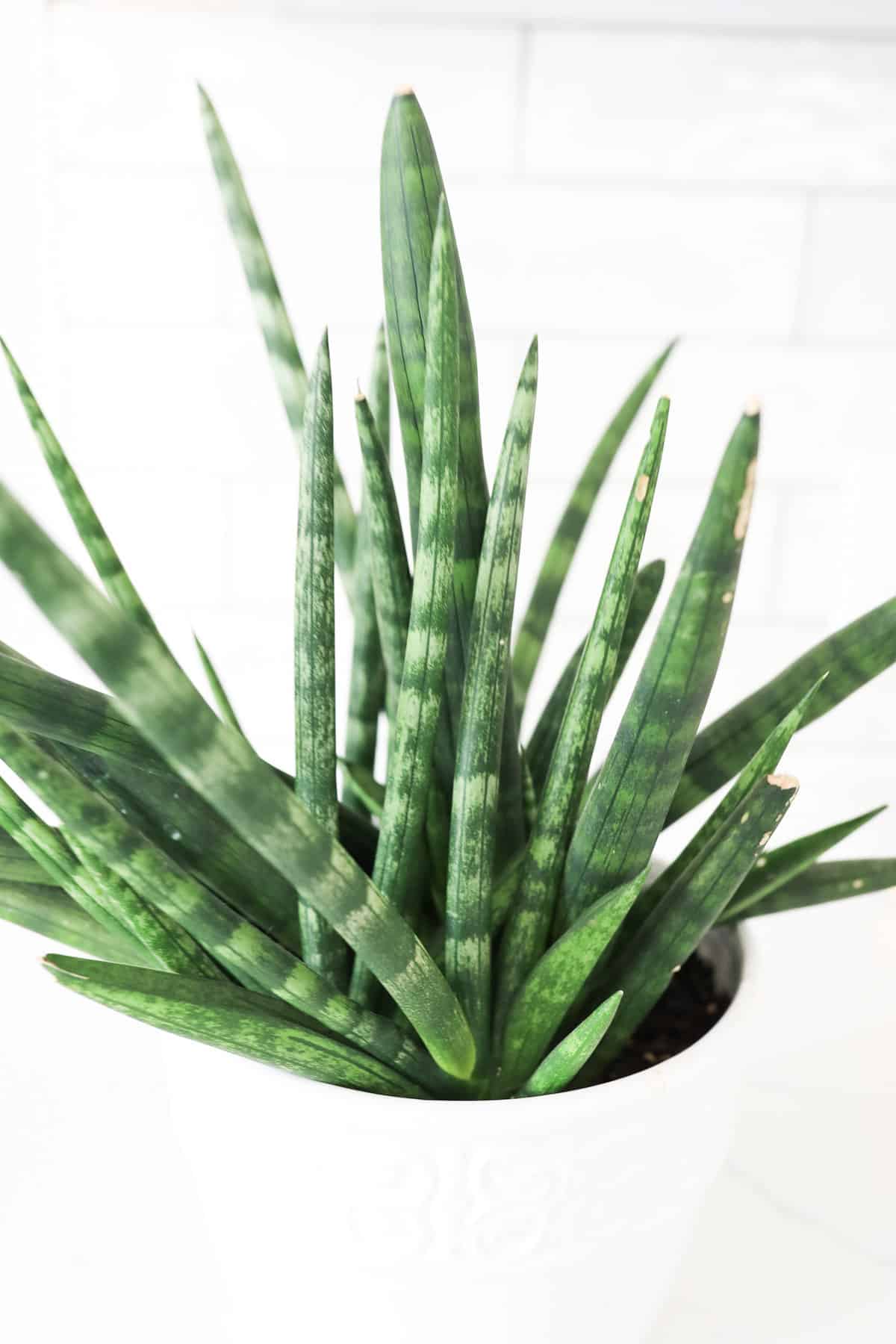
The leaves will be braided together and secured at the top to create a stunning, unique look. It’s usually done when the stalks are young and more pliable. More mature leaves are harder to move in a braided fashion.
At full maturity, these plants can get really large! You’ll find them between 4 to 6 feet tall, and a spread of 1 to 2 feet wide. When grown outdoors in top conditions, they are capable of sporadically producing a long flower spike that produces multiple small white blooms.
While these plants and their leaves are indeed beautiful, they are not compatible to all gardeners. The Spear Sansevieria plant is unfortunately toxic to both animals and humans.
So, it is best to exercise extreme caution when growing this plant, especially when it comes to curious pets and children.
Sansevieria Cylindrica Care
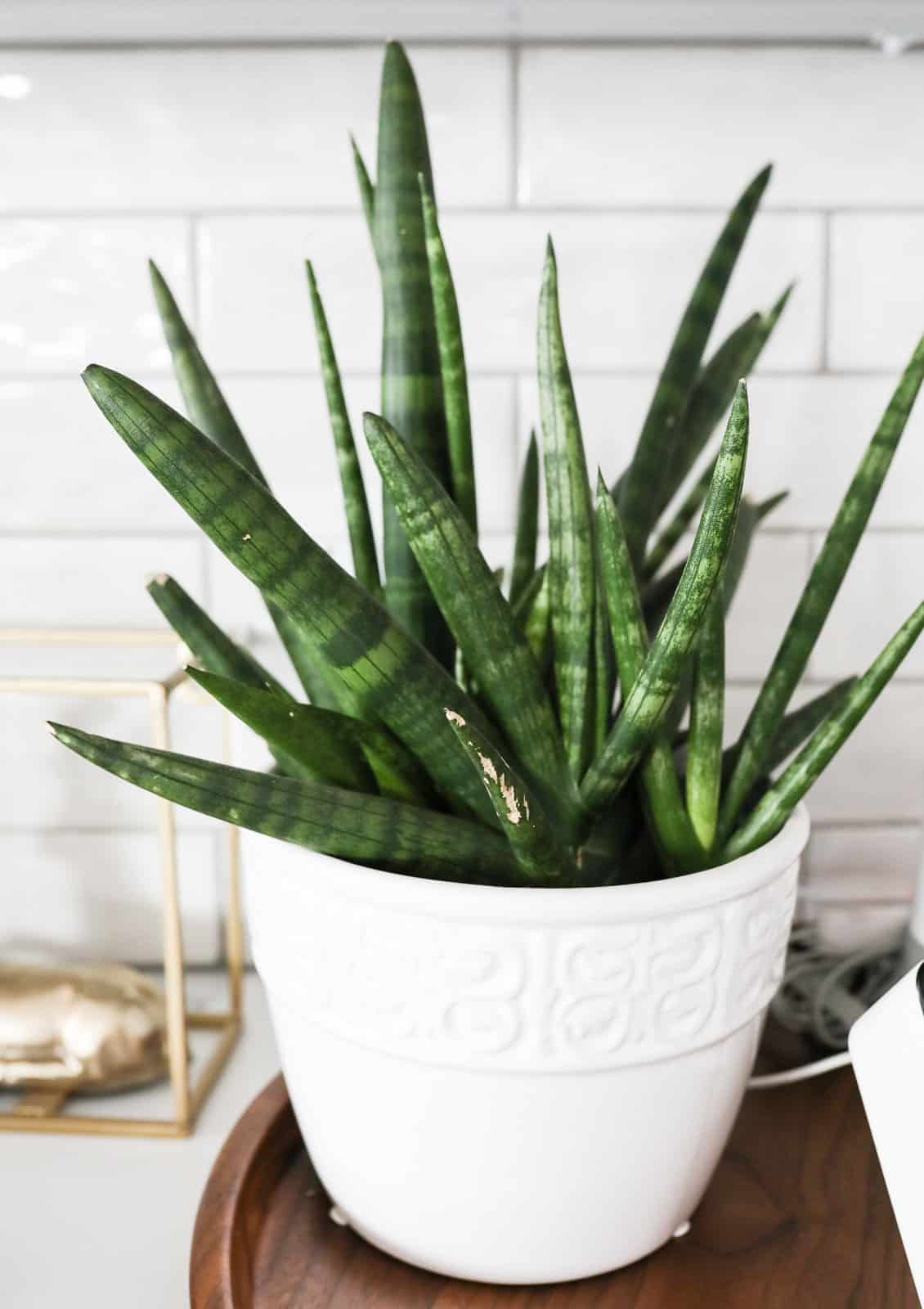
Let’s chat through Sansevieria Cylindrica care tips and tricks!
Sun & Light
Your Cylindrica African spear plant will grow best in bright, filtered light, though they are also capable of tolerating lower light conditions. Be careful of how much direct sun you expose your indoor plants to, as this can cause yellowing leaves.
Having proper light will bring out the colors in the leaves of your succulent.
Soil Type
The African Spear is a succulent plant, and as such, they grow best in a dry, well-draining soil that does not absorb much water. A commercial soil that is tailored towards cacti and succulents will work just fine for this particular plant. Keep the soil’s pH in the neutral range, around 6.5 to 7.0.
Water
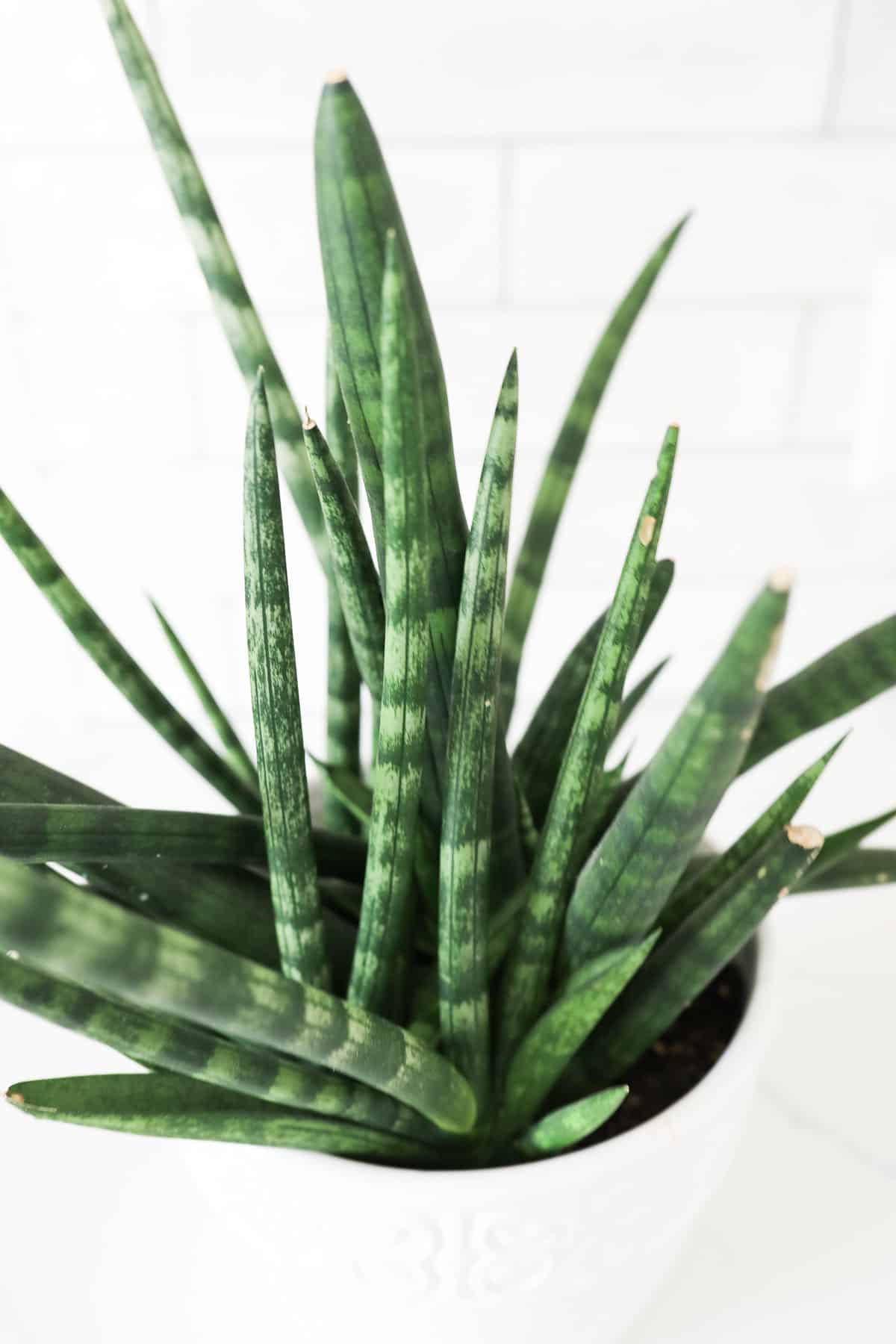
Like many other succulents, the Sansevieria plant is very tolerable of long periods of drought. For this reason, it is best to allow the soil to dry out entirely in between watering.
As with other succulent plants, it is extremely important to ensure that you do not over-water your Cylindrical Snake Plant.
Fertilizer
African spear plants do not require a hefty fertilizer regimen in order to grow. Treating your indoor plant with a diluted succulent-specific fertilizer once a month is enough to provide sufficient nutrients for your plant. This fertilizer should only be applied during the spring, summer, and fall. Cease fertilization entirely during the winter.
Temperature & Humidity
Owning an African spear means that you’ll have to do your best to help maintain the hot climate that these plants are native to. It is important to maintain a household temperature above 50° F at the very least, though ideally I would recommend 65° to 80°. Please avoid keeping your plant near air conditioning vents or drafty windows.
While these plants do grow well in dry climates, they will be more than forgiving of normal household humidity levels, as long as you keep the soil dry and not waterlogged.
Pruning & Maintenance
Sansevieria Cylindrica plants do not require regular pruning for their growth, however it would benefit you to prune your succulent for aesthetic purposes. Any dead or damaged foliage should be pruned away; make sure to remove the entire leaf at the base of the plant.
Choosing a Container & Repotting
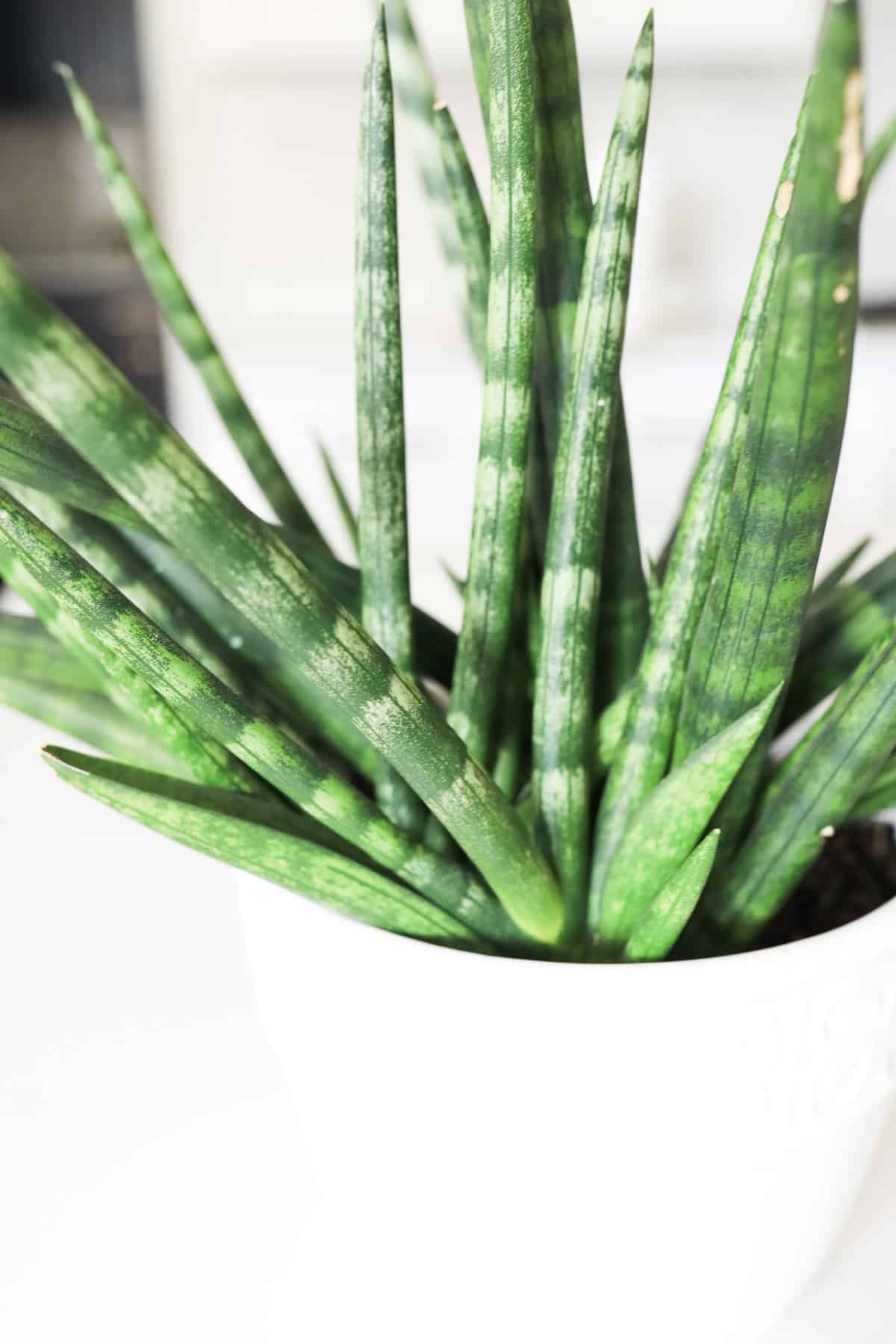
You should select pots that are roughly 2 inches larger than the root ball. It is equally important to select pots that are well-draining and have multiple drainage holes to allow for excess water to expel from the plant’s soil.
In addition, selecting porous grow pot materials such as unglazed ceramic or terra cotta help adds an extra layer of drainage to your succulent plant.
They are very slow growing plants, therefore you will only need to repot this plant every other year, or maybe even longer. If you notice roots growing out from the drainage holes, then this is a great time to repot your plant. When repotting your plant to a larger container, make sure to select one that is only a few inches larger than the previous.
How to Propagate a Sansevieria Cylindrica
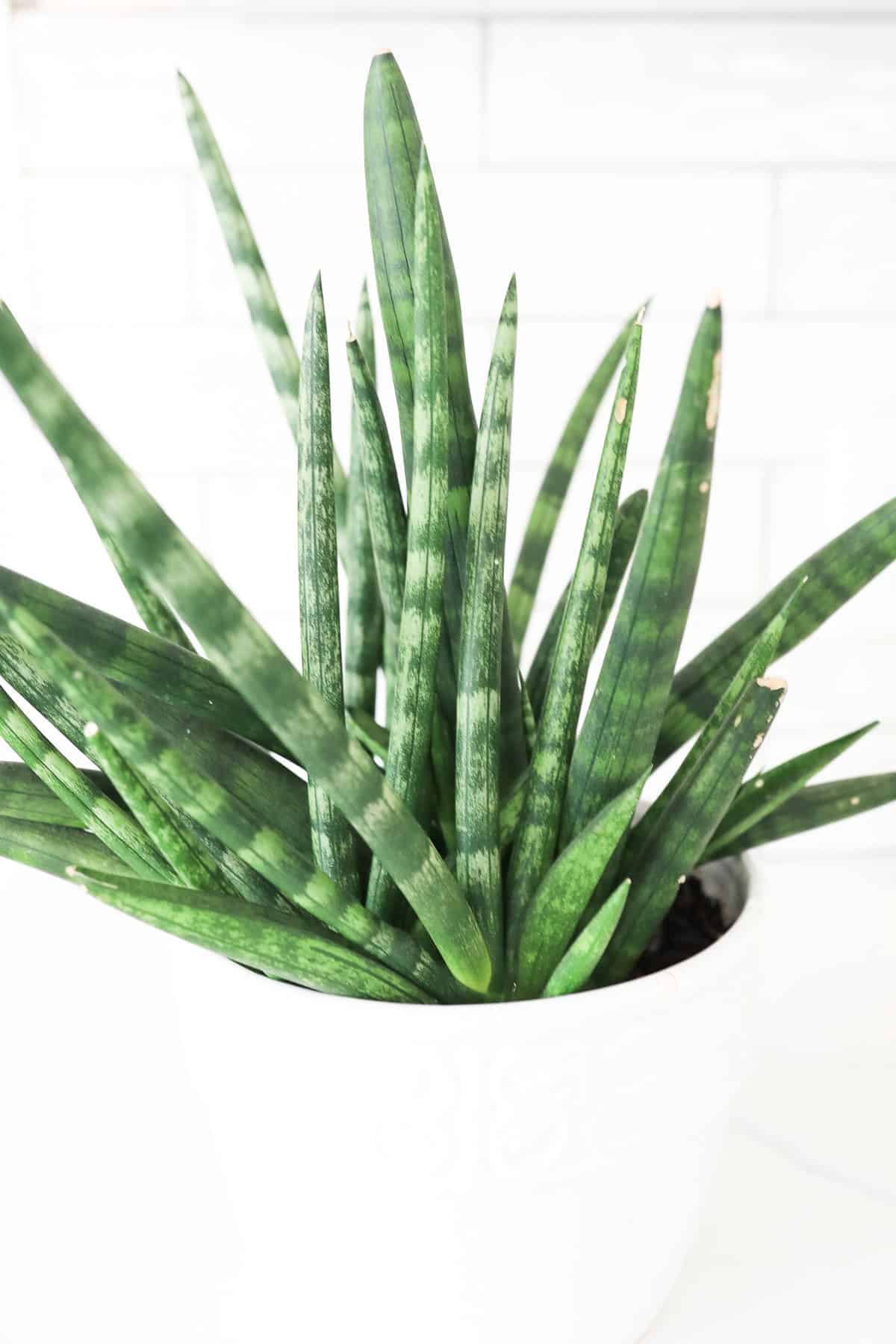
The African Spear can be propagated by separating the offshoots that grow from the base of the plant. These offshoots can be potted separately and raised into a full-grown plant. Follow these steps to propagate your plants.
- Gently remove the main plant from its container. Be cautious not to disrupt the root system.
- Try to locate the offshoots at the base of the plant. If needed, you may have to gently massage the root ball to loosen up the offshoots from the mother plant
- Once you’ve located the offshoots, remove them from the plant by cutting them with a sterile knife.
- Prepare a small planter filled with potting mix. Make sure the potting mix is lightly moist all the way through.
- Plant your offshoots into individual planters. During the first few weeks, it is important to maintain a light level of moisture throughout the soil to mitigate the risk of transplant shock.
- The best sign of a successful propagation is new growth; this is a sign that your plant has established roots and is developing into a fully grown plant.
Common Pests
Vine weevils are one of the most common pests that you may encounter when caring for a Sansevieria Cylindrica plant. These weevils chew at the edges of the leaves, which can cause serious damage to your plant.
If left untreated, vine weevils can be deadly to your Spear Plant. It is important to give your plant regular check-ups to make sure nothing has made a meal of your plant.
If you do notice vine weevil damage, there are some steps you can take to exterminate them; but I urge you to act very fast as this situation can get deadly quickly for your plant. Drenching the soil in neem oil or another insecticide is an effective and swift solution to ridding your plant of vine weevils.
Common Diseases
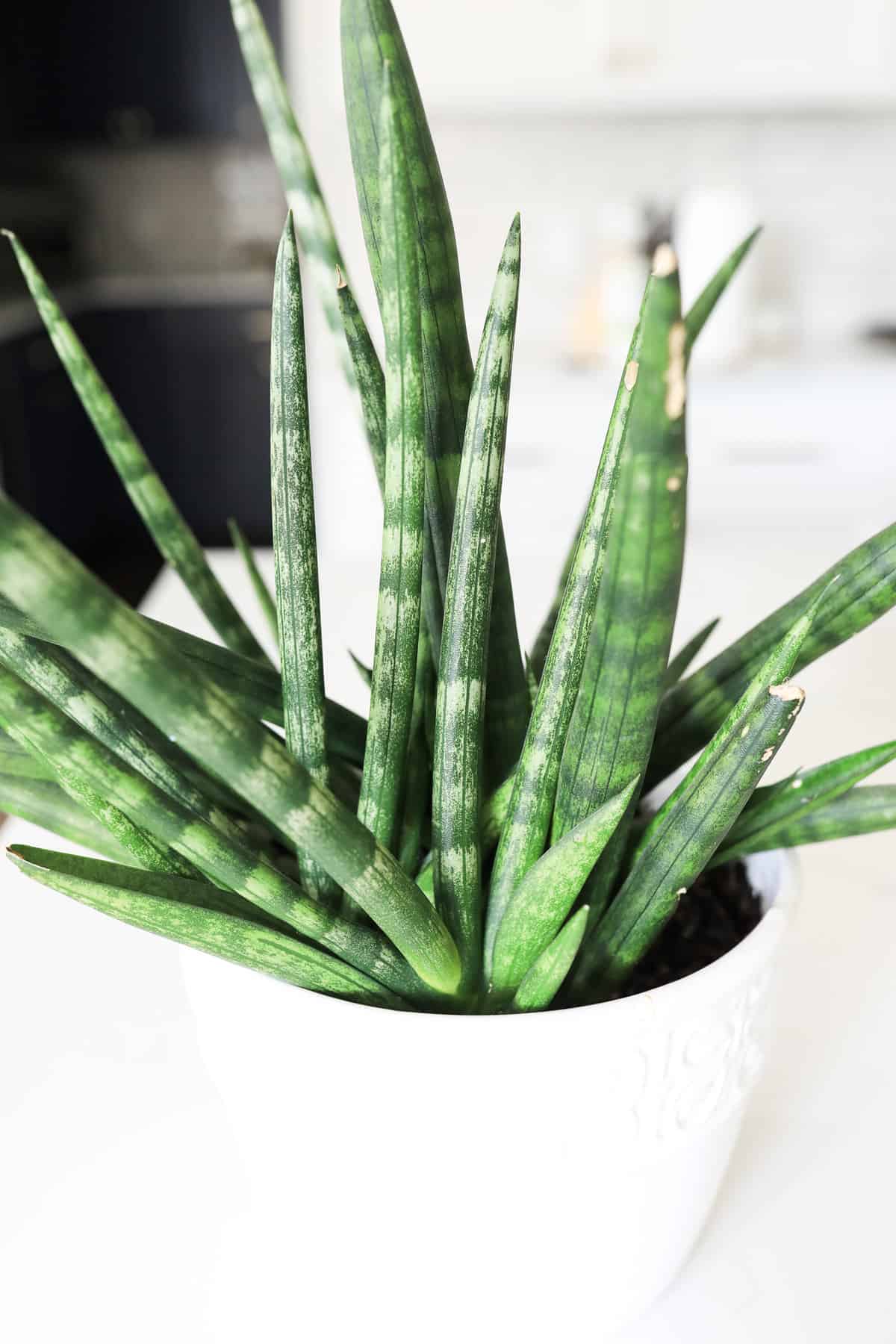
These houseplants are pretty resistant to diseases. However, like with many succulents, Sansevieria is particularly susceptible to root rot. Root rot is caused by soil that has been over-watered. This over-watering causes excess moisture to become trapped in the soil, which eventually breaks down the roots of the plant.
Root rot is very deadly, but very treatable when caught early. Early signs of root rot include dying, wilting, yellow foliage.
If you suspect your plant is victim to root rot, gently remove the plant from its container and prune any rotted roots you may find. Rotted roots are mushy in texture and black/brown in color. Repot your succulent in a sterilized pot and fresh, dry potting mix.
However, the best way to treat root rot is to prevent it from ever happening in the first place. Always remember that as a succulent, the African spear plant enjoys growing in a sandy, well-draining soil and drought like water conditions.
Please refrain from watering your plant until the soil has entirely dried up. In addition, make sure that your plant’s pot has multiple drainage holes that can easily allow excess water to flow out from.
Checking on your plant often will keep diseases away.
FAQ
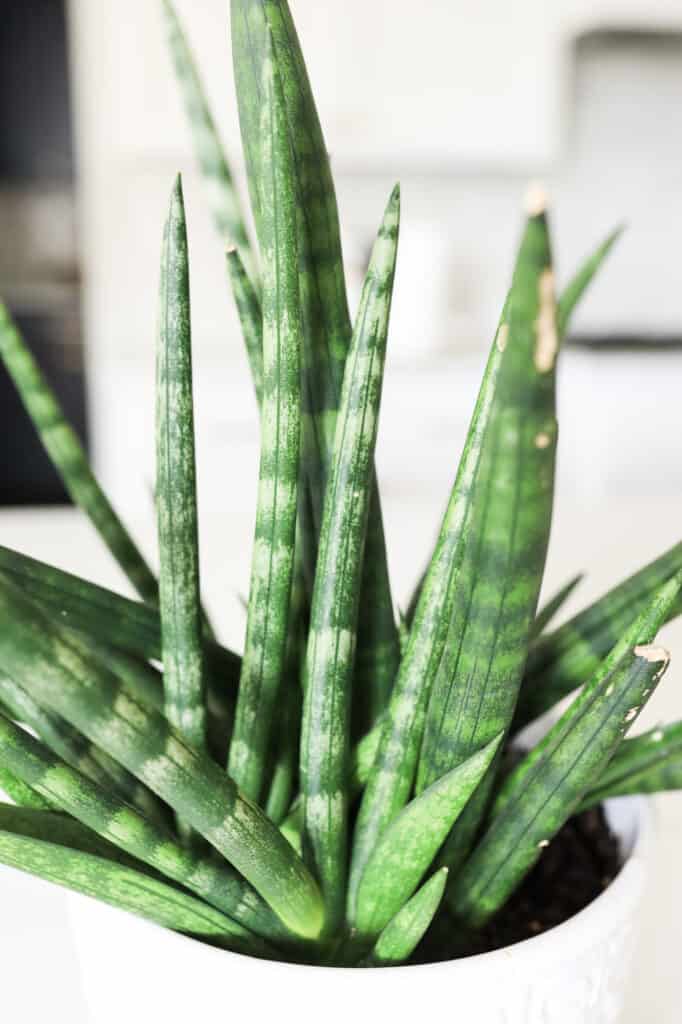
Yellow leaves is a likely sign of too much sun. Keep in mind that the best light conditions for your plant is bright, indirect light. Try to give your plant at least 6 hours of filtered light per day.
On the flip side, stunted growth is often a sign of too little light. Remember, a full day of bright, filtered light is the way to go when growing a plant Sansevieria Cylindrica. While these plants are tolerable of growing in low-light conditions, it can cause stagnant growth.
Curling leaves are often a sign that your plant is not receiving enough water. I know that it sounds silly, considering how much I’ve emphasized that the African Spear is drought-tolerant, but even succulents need an occasional watering.
When your plant’s soil has dried out entirely, it’s a good time to give your succulent a deep watering. Gently water your plant until the excess water begins to seep out from the drainage holes at the bottom.
Where to Buy
Sansevieria Cylindrica plants are a great plant to grow in any home. Whether you’re a newcomer looking for easy houseplants to grow, or you’re a seasoned gardener who loves the unique striped foliage of the Sansevieria, this is the plant for you! This plant will give the decor in your home a fun vibe.
We hope this care guide helps you see you can grow this plant with succuess!
Love snake plants? Head to this post for more Snake Plant care fun! Or head here to learn about why a snake plant is a succulent (just like this sansevieria!).

